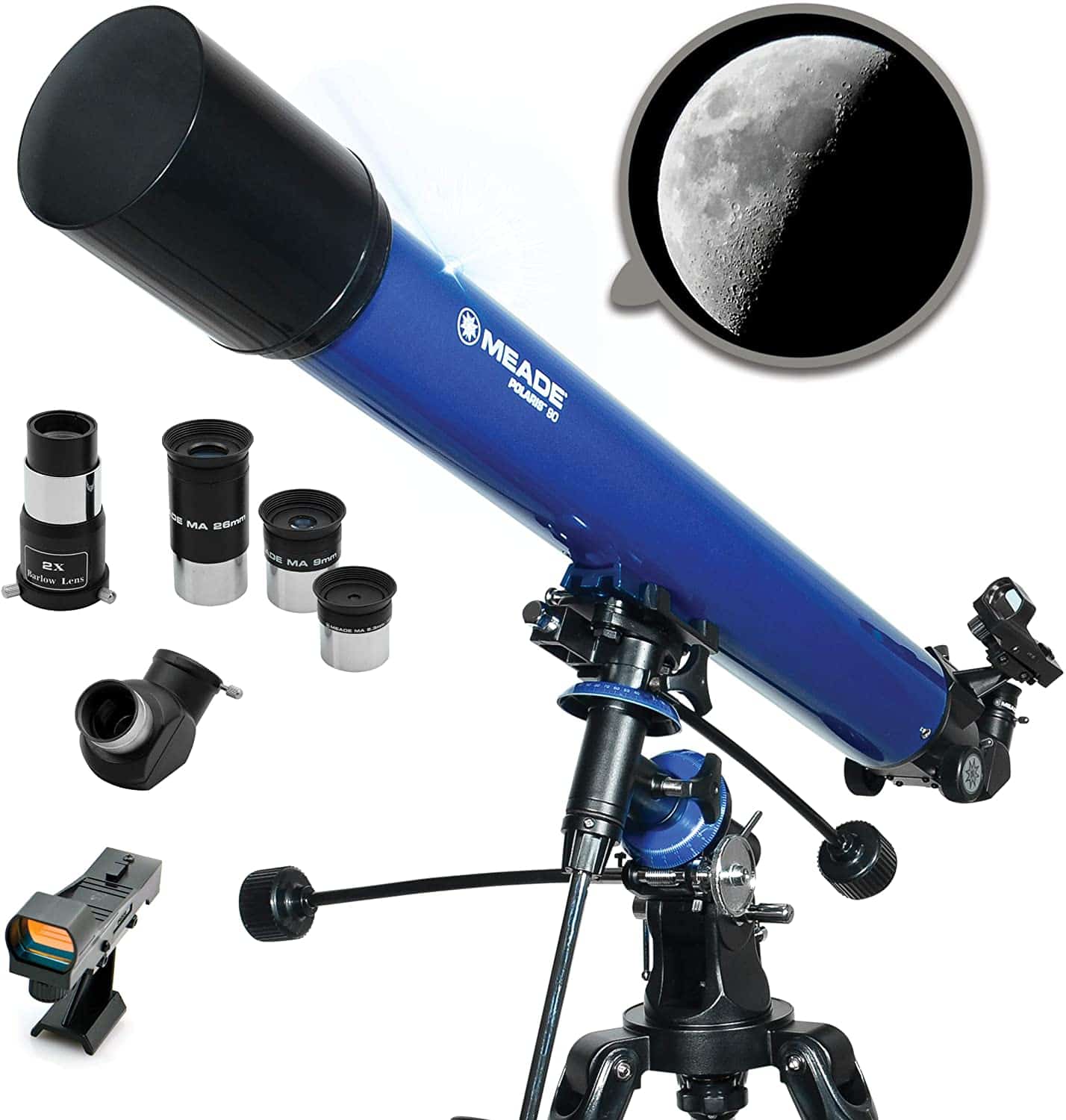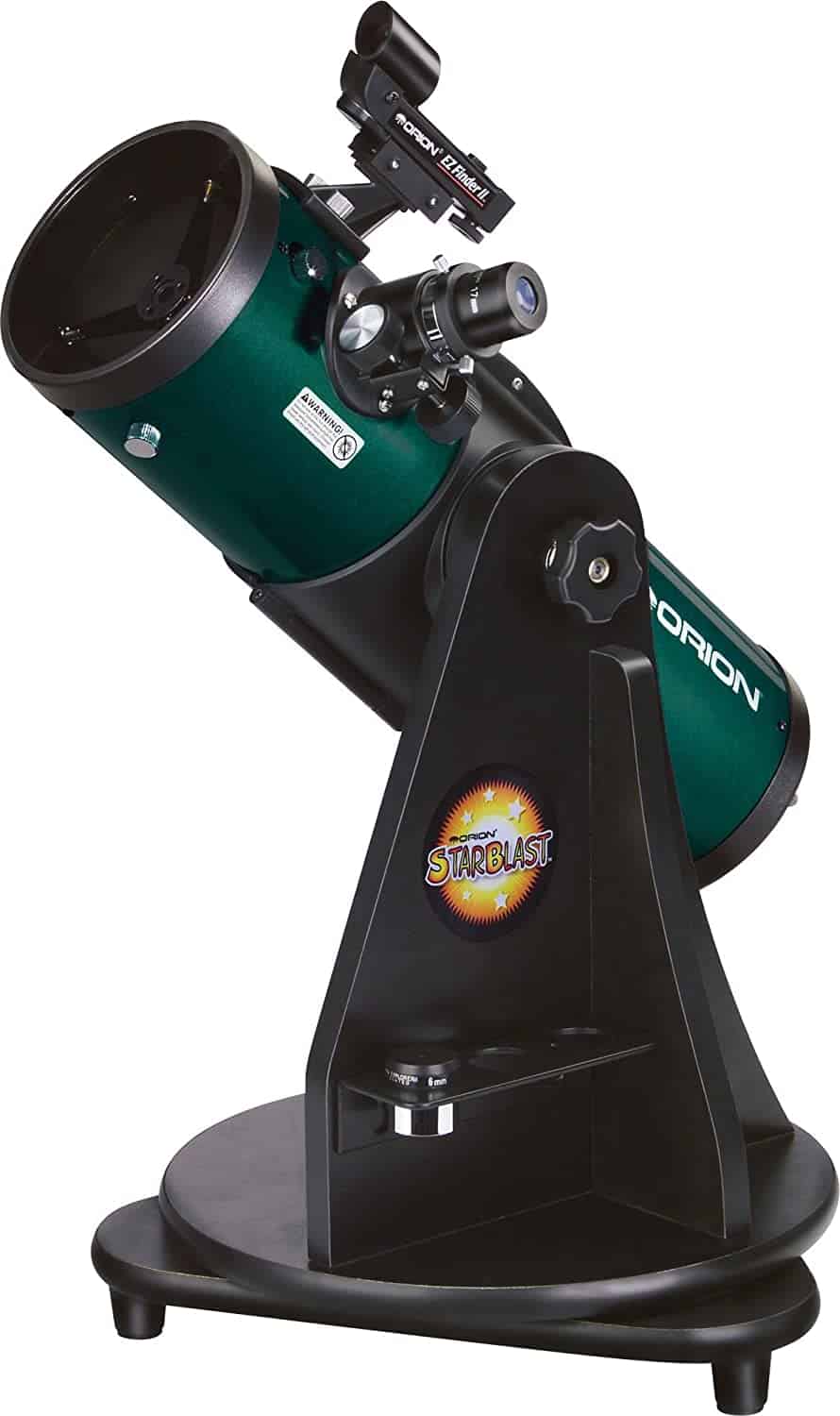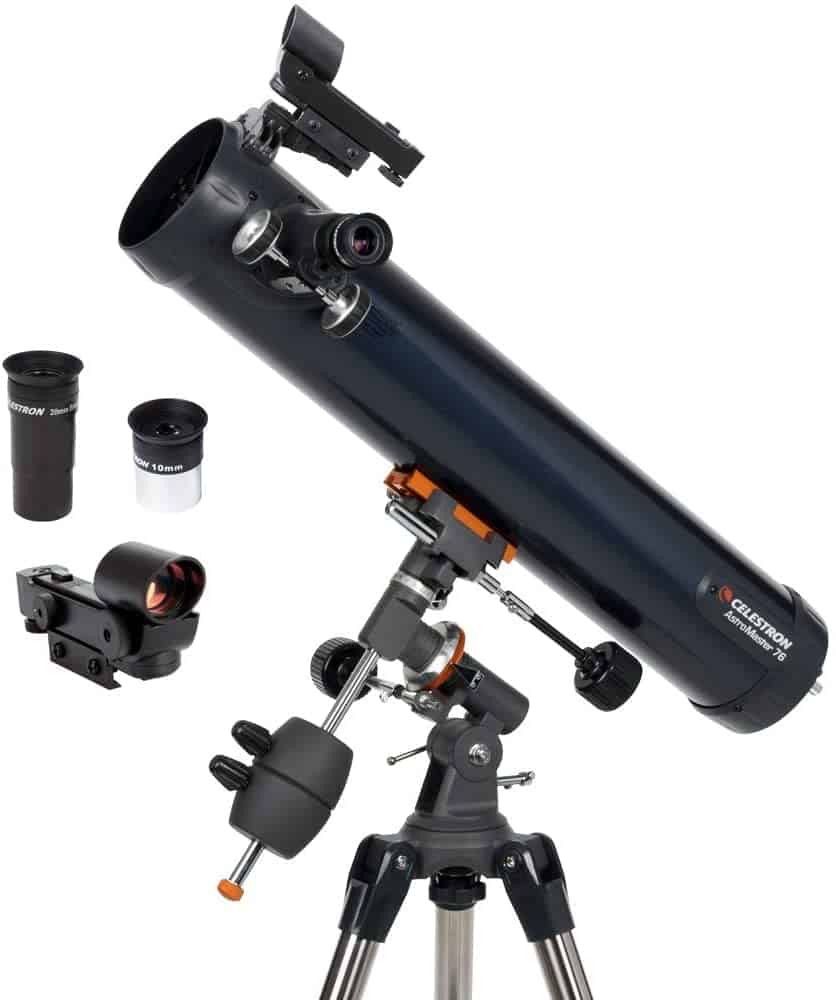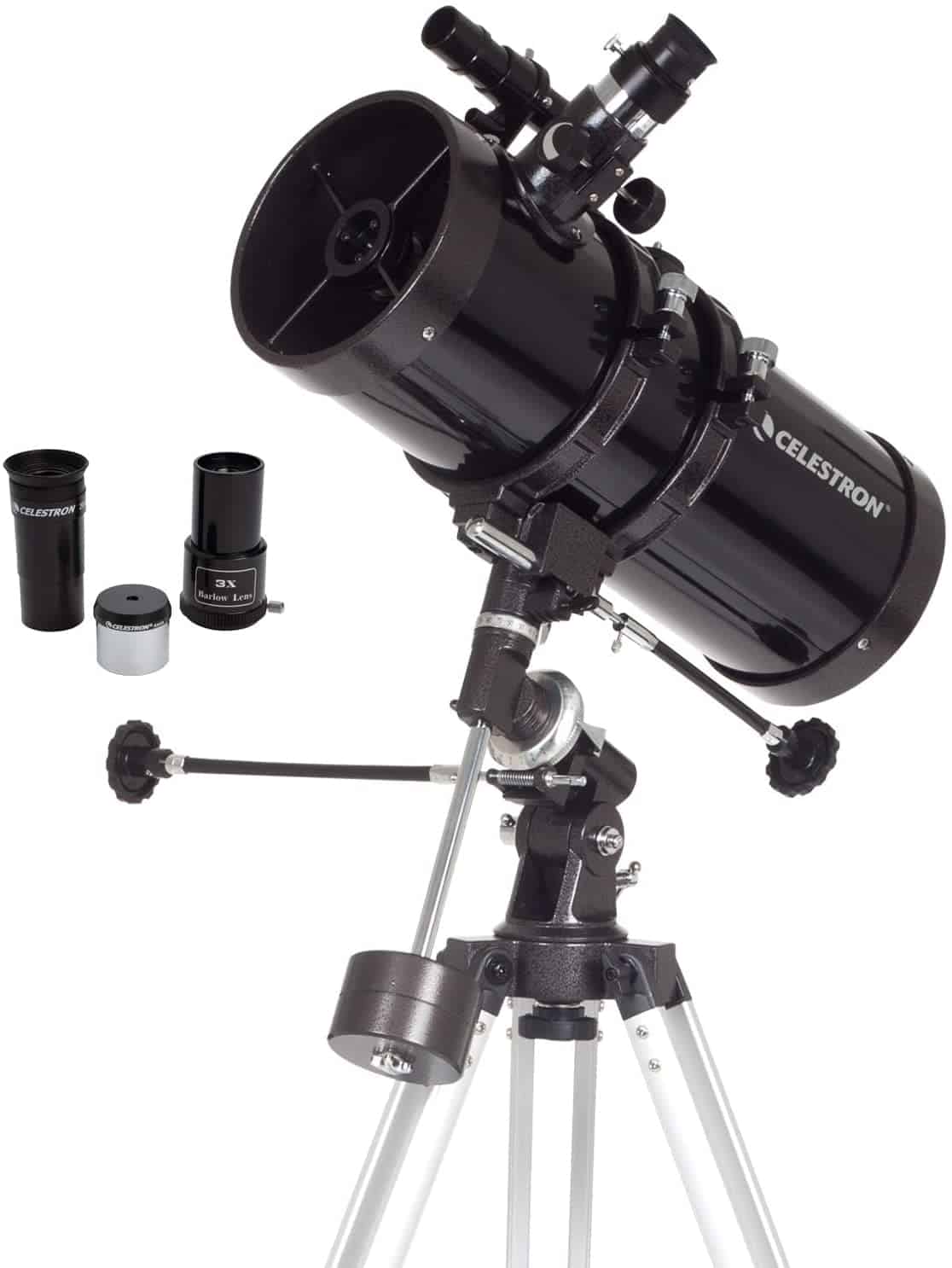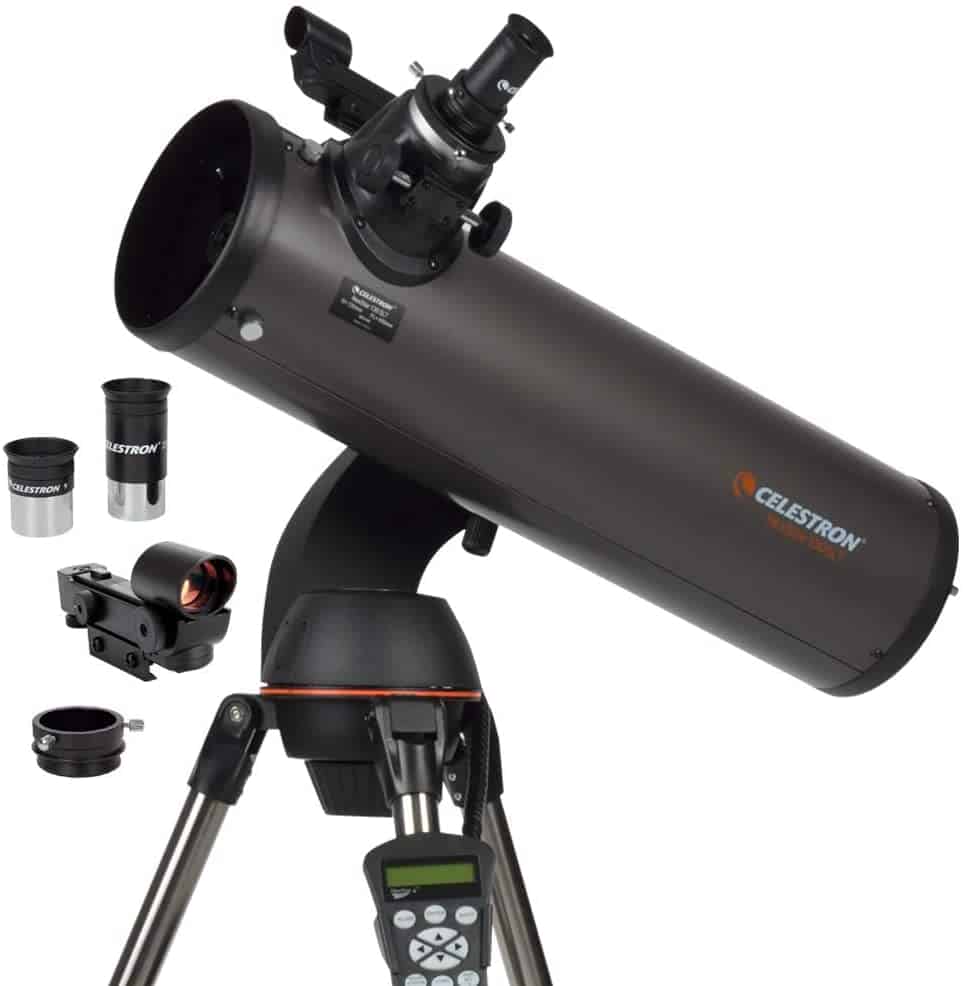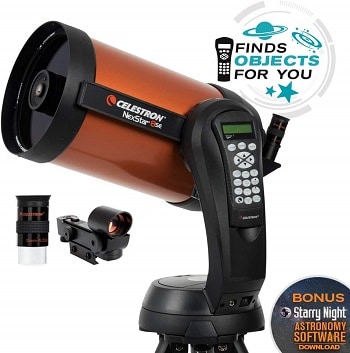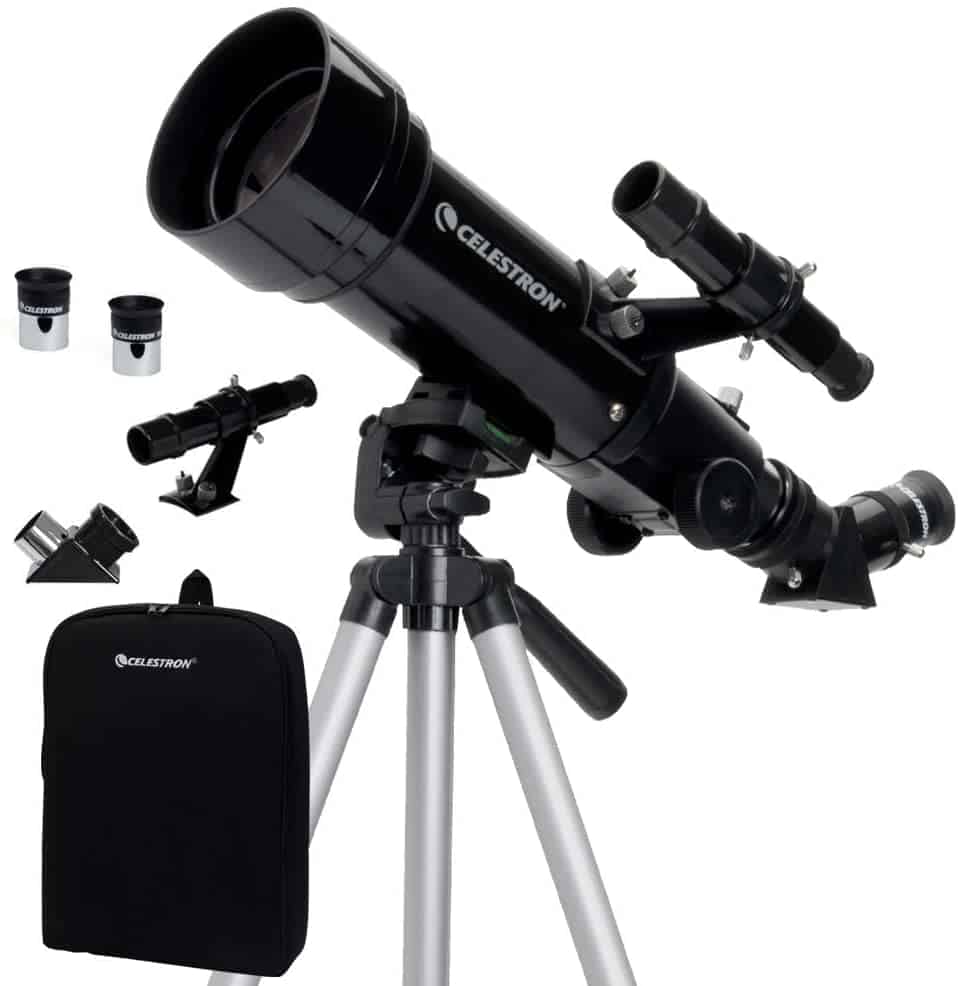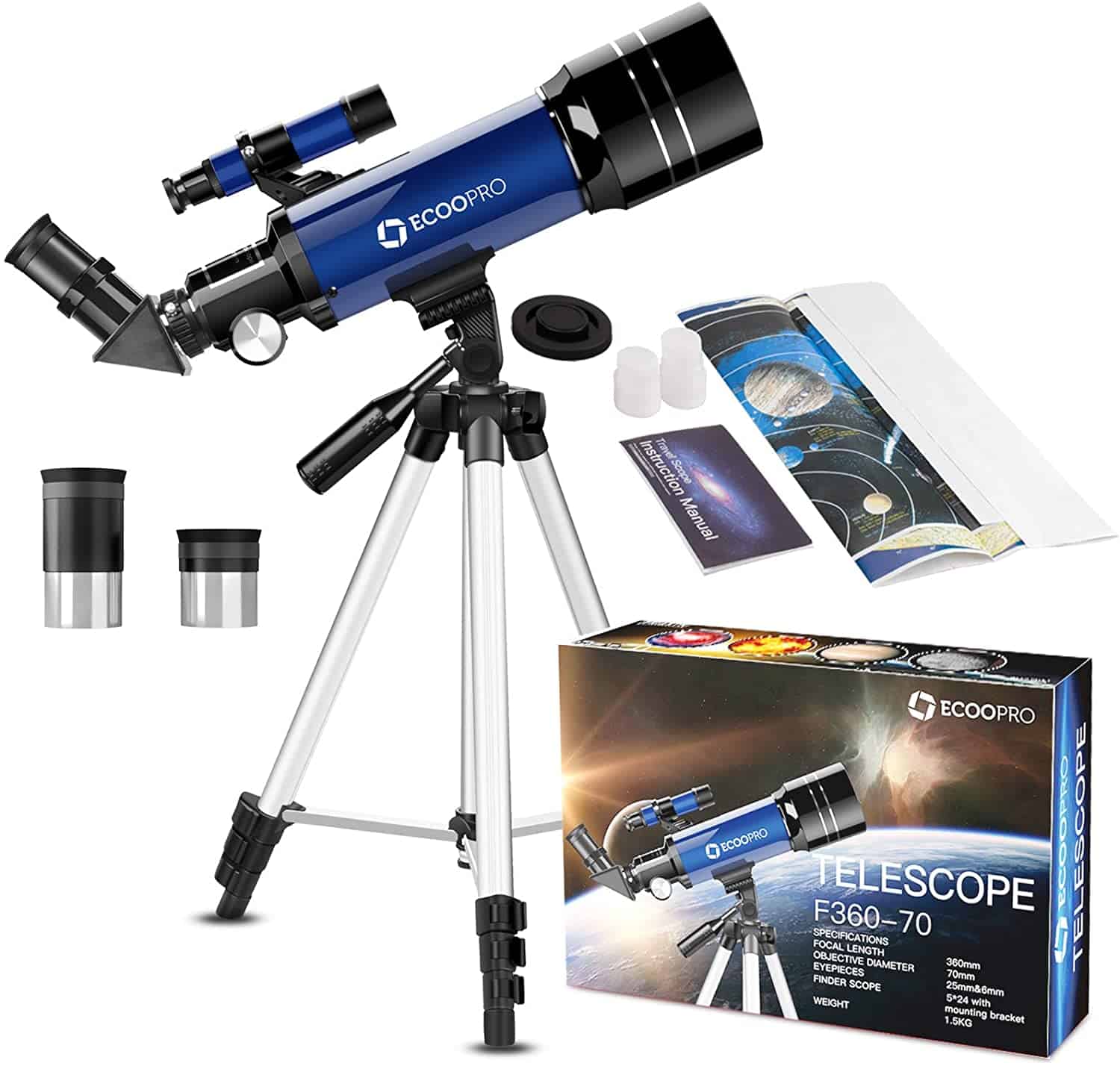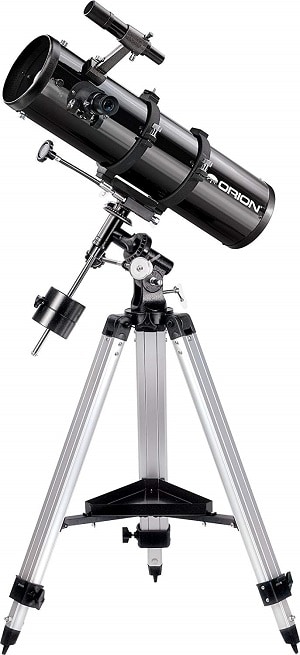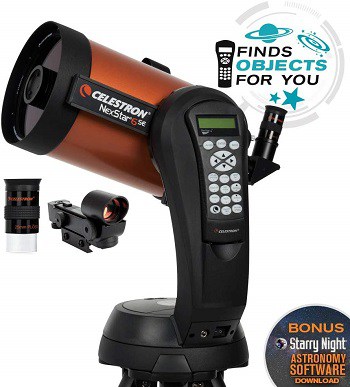Looking for the best telescopes with excellent magnification on the market? We've done the research to help you find the perfect telescopes with excellent magnification to suit your needs.
Humans always wondered about the stars and asked questions. In past, we were just able to look from the earth, the heavenly bodies above us with awe and that fascinated us. But, back then there was less environmental pollution.
And, the views at night were mesmerizing. As the invention of the microscope and telescope took place era had changed in between. Inventions led people to start discovering the universe in reality. Nowadays, astronauts have taken us to a path on which we have discovered the path of light and understanding.
But, what about you? Have you ever thought about what lies in the heavens above us? Have you ever wondered if the right choice of the optical device would make your dream come true? Then, you are in the right place.
As technology is advancing at a rapid pace, the telescope of various outstanding features has been introduced to mankind. The most important factor of a telescope is its magnification which has made looking into the cosmic objects possible.
Magnification is the enlargement of the concerned object. It affects the working of the telescope. If you want your telescope to perform best then you should know the magnification of the telescope. But, the real question is how much should be the magnification of the telescope?
After if you did not make the right call? Don’t worry we have reviewed and gathered all the information here for you. You just have to give this buying guide a read/ and, we guarantee there will be no more question.
As you know different telescopes have different magnification ranges. So, it becomes difficult to choose from this wide range. Several factors affect the magnification of the telescope then, you can decide what should be the magnification of an ideal telescope for you.
Best Telescopes with Excellent Magnification: Based on User Reviews
Let's take a look at the top products on the market, based on the average rating by real customers just like you.
Image
Product Name
Ranking
Price
Best Telescopes with Excellent Magnification: A Complete Review
If you've made it this far into the reviews then you must be serious about your buying choice.
Now that we've covered the quick list of products, let's break down each of them to see why they have been chosen.
In this section we'll cover the pro's and con's of each and give you some ideas of who each product is most suitable for.
The Meade Instruments Polaris telescope is one of the best telescopes to observe deep space objects. It has a large aperture of 90mm. That allows a sufficient amount of light to enter and create bright images. The telescope has a unique design that gives you motion control.
In that way, it is easy to track the deep celestial objects. The telescope has a German Equatorial mount that is large and stable. It comes with three different magnifications. The lowest is 26mm, the medium is 9mm, and the high magnification is 6.3mm.
It allows the user to watch and locate divine celestial objects. The telescope also comes with 2x Barlow Lens that adds to the efficiency of the magnifying power. It has a red dot in scope finder that makes the navigation of objects easy.
You will capture the objects faster and easier. It has a 1.25” erect image diagonal prism to capture the object properly. The Rack and Pinion focuser is another important feature of this telescope. It has an accessory tray and a tripod stand. The astronomical software comes in DVD with the telescope.
Pros
Cons
The Orion StarBlast is a very powerful telescope. It has a robust and compact design. The assembly is pretty straightforward that even a beginner can do it. The telescope has amazing features for both beginners and professionals.
The telescope is lightweight and portable. You can take it to field trips, camping, hiking, and stargazing. The focal length of 450mm and 4.5-inch aperture allows a decent amount of light to enter inside the device.
It creates bright, crisp, and clear images. The magnification of the lens is powerful. It brings the deep celestial objects closer to your eyes. The f/4 focal ratio makes it easy to track and identify deep objects. It has borosilicate glass material that has a low thermal expansion.
The telescope comes with a mount that provides stability in movement. It allows you to track objects easily. The Orion telescope has two powerful eyepieces. These eyepieces facilitate the magnification. You will get an eyepiece rack, free astronomy software, and a collimation cap.
Pros
Cons
The Celestron AstroMaster 76EQ is a very innovative reflector telescope. It has all high-grade features that will help you observe the deep celestial objects. The telescope has a fully multi-coated lens that will protect the eyes from harmful radiations and create clear images.
This coated lens produces crisp, bright, and high-end images. It has a compact, portable, lightweight yet very robust frame. The telescope is a travel-safe, and you can take it to field trips. It comes with a StarPointer red dot finder that will help you locate the divine celestial objects easily.
The telescope kit also includes a tripod stand. It is quite sturdy and easy to adjust. The telescope has a primary mirror at the center with fully coated 76mm optics. It has two powerful eyepieces with amazing magnification that is 35x and 70x.
The magnification brings the faraway stars, galaxies, and other celestial objects closer to you. The amount that comes with this telescope has made the movement more steady and easy to track the objects. You can view both divine celestial and terrestrial objects with the help of this telescope. The telescope is best for traveling.
Pros
Cons
The Celestron PowerSeeker 127EQ Telescope is one of the powerful telescopes. It is a manual telescope with straightforward instructions. The telescope has all of the good features that are required to observe the deep celestial objects. It has a German Equatorial Mount that facilitates a smooth and stable tracking of objects.
The telescope has a knob that will allow you to adjust and track the objects in any direction. It is easy to assemble and has user-friendly settings that work amazingly with both professionals and beginners. The aperture of the telescope is large that allows sufficient light to enter into the lens.
That is why it produces bright and clear images. The telescope comes with two eyepieces both of these adds to the magnification. It has a powerful magnification that brings the deep sky objects closer to you. The telescope has fully coated mirrors that make it almost 94% reflecting.
It has a compact and sturdy design. The telescope is lightweight and safe for traveling, so you can take it anywhere you like.
Pros
Cons
The Celestron NexStar 130SLT Telescope is one of the innovative and high-grade engineered telescopes in the market. It is a computerized telescope with a high level of efficiency and accuracy. The telescope is perfect for both professionals and beginners.
It has a compact and portable design. The frame structure is lightweight yet sturdy. You can take the telescope on field trips, as it is travel-friendly. The telescope has a high magnification that brings the deep celestial object close to your eyes.
The large 130mm aperture gathers enough light that enters the telescope. That is why the images created by the telescope are crisp, bright, and clear. The telescope has fully multi-coated optics. It prevents the harmful radiations from damaging the telescope and protect your eyes.
The telescope comes with a stable and sturdy tripod stand. It is quite difficult to observe deep space objects without using the tripod. The telescope kit has a free astronomy software. It comes with an additional accessory that helps with the functioning of the telescope.
Pros
Cons
The Celestron NexStar 8SE is one of the famous and innovative telescopes in the market. It has an amazingly large aperture and sturdy frame structure. The Celestron is no doubt a highly efficient and expensive telescope. It has fantastic features, a large aperture, and high magnification.
The 81x magnification brings the deep celestial objects close to your eyes. So, you can easily observe them. The large aperture allows sufficient light to enter the lens and create a bright, crisp, and clear image. Its magnification is appealing for both professional and beginner astronomers.
The automated GoTo mount has enough power to view and save the data of over 40,000 objects. You will get other additional accessories including eyepiece and finder scope. The eyepiece enhances the magnification of the telescope.
Its red dot finder will help you track the deep object easily. In short, you will get all the exceptional features, but you have to pay more than usual.
Pros
Cons
The Celestron Travel Scope has a robust yet lightweight structure. It is one of the innovative telescopes available in the market. The telescope is easy to assemble, easy to use and comes with advanced features. It is best for users at all levels.
Whether you are a beginner, expert, or a kid. The compact style is travel-friendly. It does not take much of the space. You can carry it to the field trips, hiking, and climbing. The telescope comes with a 70mm refractor and two eyepieces.
These two eyepieces give the high magnification of 20x and 40x. In that way, the deep celestial objects come closer to your vision and you can observe them deeply. The telescope also comes with a free bonus astronomy software.
It has printable sky maps including 10,000 object databases. All of these features make it a very useful and powerful telescope.
Pros
Cons
The Ecoopro Telescope is one of the best telescopes available for kids and adults. You can buy it for a kid who wants to learn more about deep space or give as a gift to a professional astronomer. It has features that support the needs of everyone.
The 70mm refractor is excellent to observe faraway sky objects and vast landscapes. You do not have to go through the tiring assembly, as it is easy to assemble. The magnification is powerful that brings the faraway stars, galaxies, planets, and other objects close to you.
The lightweight and compact structure allow you to take it on field trips and other outdoor adventures. It has exceptional features at a very reasonable price. You will get shocked by its working pattern. The telescope has two eyepieces that enhance the magnification of the telescope.
It has a large aperture that allows light to enter and create bright, crisp, and clear images. The tripod that comes with the telescope is adjustable and allows you to observe the objects in any direction.
Pros
Cons
The Orion SpaceProbe is a very efficient and high-level telescope. It has a large aperture that works great and allows sufficient light to enter into the telescope. The images created with the help of this telescope is bright, crisp, and clear.
You can easily observe deep celestial and terrestrial objects. The design of the telescope is travel-friendly and portable. It has lightweight yet sturdy frame construction. You can travel to the field trips with this telescope.
The 24-inch long optical tube design is portable and easy to handle. The telescope comes with a lot of additional accessories including eyepieces, and a Barlow lens. It has two eyepieces that enhance the magnification of the telescope.
The finder scope helps you to locate the deep space object easily. It also has an Equatorial mount that will help users navigate and observe the deep space objects with higher accuracy.
Pros
Cons
The Celestron NexStar 6ES is a very efficient and accurate telescope from the NexStar series. It has high-level components. The telescope is perfect for experts and beginners. The NexStar 6ES is an innovative and advanced telescope with a high range from the series.
It has a large aperture that allows sufficient light to pass through the lens and create bright, clear, and crisp images. the telescope has a computerized system and a fully coated lens. This lens protects the device and your eyes from harmful radiation.
The telescope is lightweight, compact, and portable. you can carry it anywhere you like. It has a high magnification that brings the faraway stars near you. The telescope comes with an additional eyepiece that enhances the magnification.
In short, it is a very high-grade and modern telescope. It comes with astronomy software.
Pros
Cons
Best Telescopes with Excellent Magnification: Buyer's Guide
Suppose for a minute that light travels through the atmosphere through the telescope and then at last into your eyes. The magnification range of the telescope is determined by each segment of the journey. the thing that disturbs you is what factors affect the magnification.
This buying guide will help you understand all the factors in detail.
-
Eyesight
Human eyes have an automatic focus and iris, a curved surface, an aspheric lens, a chemical intensifier for an image, a windshield, and a lens cover. And a marvelous stereo vision!
The human brain does wonder and processes the error if any. When using a telescope, the people who have near or farsightedness can remove their glasses because the telescope is manufactured in a way to cover these eye defects. The magnification is greatly affected by manual eye defects like debris bits in the eyes.
-
Eyesight vs. Telescope Magnification
The six major factors that affect the magnification of the telescope are angular magnification, atmospheric conditions, the telescope's aperture, optical design, and the type and size of the concerned object. Here are some tips for you.
If you want the half-disc of the moon to appear 25 degrees wide then choose a telescope of 50-power. if you want to get low magnification, then use eye lenses of focal length. High magnification can be the result of short focal length eyepieces such as a Barlow or stacked lens. But, there is a catch in that but you have to be aware. The high magnification causes too small and dim fields.
-
Resolution
It is the smallest angle between different close separate objects that can be clearly seen. It is limited by the second nature of the light i.e. wave nature.
-
Aperture
The diameter of the objective or primary lens or mirror of the telescope that is usually measured in mm is called the aperture. For getting a brighter image the aperture is taken of large size.
-
Exit Pupil
The image that is produced by the eyepiece. It is the place of your eye to view. It is calculated by dividing the objective diameter with magnitude. It can also be said as an objective’s f/number.
-
Atmosphere
Consider a night of high transparency. It is the perfect opportunity for viewing nebulae, faint stars, and other celestial beings. But, you should know that there is air turbulence too. Which makes an awful decision to stargaze.
The best weather is the hazy summer to view the heavens. The pollution in the environment also affects to see but you can avoid it by viewing from a remote site by using your ideal telescope.
-
Image Sharpness
The question that usually pops into your mind is that how sharp can be the magnification of your telescope? The circular telescope aperture diffracts waves of light and forms bright and dark rings. When you focus the image of the star becomes a small dot that has faint diffraction rings surrounding it.
Atmospheric air turbulence and telescope imperfections make it challenging to see the patterns. A perfect dot contains 84% of the aperture’s total light.
-
Maximum Magnification
For most of the amateur, astronomy is an aesthetic desire but for some, it is their passion. So, the question that worries them is how many features should they keep in mind before choosing the telescope magnification?
5Ox per inch of aperture is The highest telescopic magnification. The atmosphere affects less to the small telescopes and can form an image up to 100x per inch of aperture.
-
Myths about the Magnification of the telescope
There are many myths about the magnification of telescope that you get to listen to many people. So, we have decided you reveal to you the truth.
About the lowest useful magnification
With a refractor, the exit pupil does not have any limit. You can use whatever you require to get the field. If the black spot in the exit pupil becomes obtrusive then it means the low power limit of the refractor has been reached.
A 7 mm exit pupil as considered to give the best result but it is not true. It can give you the brightest view of the sky. But if we increase the magnification then despite pf the low exit pupil. There will be more details shown. The fainted stars will be shown and it can also show the contrast.
About waste of light and Resolution due to largest exit pupil than 7mm
A larger pupil can waste aperture with a refractor. But if the magnification is lower then it should not concern you. The brightness and resolution of the image are not going to get affected. This is because of the black spot in the pupil which becomes larger by the secondary obstruction. Reflectors are the cause of field shadowing and light loss. But the myth is revealed that there is no loss of resolution due to low power.
Contrast Images are caused by Long Focal Ratio
Refractors can be one of the factors for higher contrast of the image because of their nature and mirror coating that allows the scattering of the light.
But the factor that long focal ration causes higher contrast image can’t be true because the refractors that have the same size of secondary obstruction will cause the same contrast and it does not affect the magnification of the telescope.
The highest magnification of a telescope is 50x per inch of aperture
This myth is so stupid because as we have discussed above the small telescope doesn’t have environmental exposure that can cause harm. So, they produce images up to 100x and 200x per inch of aperture. To get the highest magnification, try to use 3 or 4 inches refractor like it produces an image of 200x per inch of aperture. But, this is rare because it is unlikely that an assisting device help telescope magnification.
The image quality is affected badly by Barlow lens use
Barlow glasses and lens have indeed been basically made to use with modern eyepieces. The actual truth is it assists the eyepiece by degrading astigmatism at the edge of the field. Not only this Barlow lens the f/number of the objective and allows you to use eyepieces of longer focal length with their long eye relief to view and stargaze with high magnification.
-
How to Calculate Magnification?
The magnification can be calculated by simply dividing the focal length of the scope by the focal length of the eyepiece. For your convenience read the example. if a 1000mm focal length scope is used with a 25 mm eyepiece then just divide 1000mm by 25 mm the magnification will be 40x.
The telescope which has high magnification like 600x per inch of aperture should be avoided. The most beneficial and effective telescope is the one that has magnification 50x more than its aperture in inches. And, when talked in mm then twice its aperture. To get a good 600x you need a 12 inches wide scope. But, even in this situation, you have to wait for the perfect night.
Frequently Asked Questions
Best Telescopes with Excellent Magnification: Final Word
The secrets of the universe could indeed be revealed to you if you choose the right optical device to view it. The right type of telescope can give you the most memorable and best experience of a lifetime. You can explore and wonder the whole night!
But, choosing the magnification has become an obstacle to live their passion. So, we have reviewed for you the most important factors you should consider before choosing the magnification of the telescope. Without reading, all the information could felt believable.
But, we assure you that after reading this buying guide you would tell the difference whether the factors are actually affecting magnification. We hope that you find all the information you need on magnification and make the right choice.
Happy stargazing!

